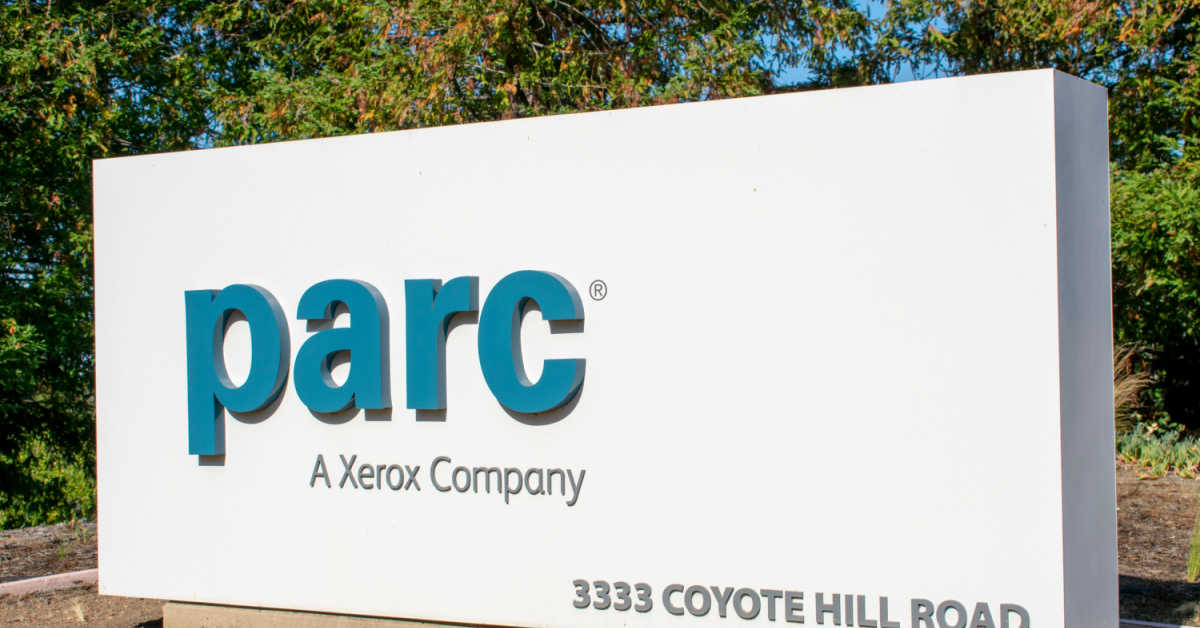Techies All GUI-eyed As Xerox Says Goodbye To Palo Alto Research Center

Xerox is donating the iconic Palo Alto Research Center (PARC) in California to SRI International, a non-profit scientific research institute, apparently so the company can focus on other stuff.
Xerox PARC has acquired an almost legendary status in the annals of the IT industry as it directly contributed to key technologies that we take for granted with modern computers such as the mouse-driven graphical user interface (GUI), Ethernet networking, and laser printers.
Here at The Register, we recently toasted the 50th anniversary of the Xerox Alto, for example, which was made available for use by staff at PARC, although not sold as a commercial product.
Founded in 1970, PARC was eventually spun off by Xerox as a separate but wholly owned subsidiary in 2002. Now the lab's Silicon Valley headquarters and associated assets are being donated to SRI International so that Xerox can focus on "delivering new innovations around its print, digital and IT service offerings," the company said.
Chief executive Steve Bandrowczak claimed the move would allow Xerox and PARC to each focus on their respective strengths.
"With this arrangement, PARC's deep tech innovations will be sustained by SRI while allowing Xerox to simplify and optimize its operations and focus solutions on the continued evolution of hybrid work," he said in a statement.
- Turing Award goes to Robert Metcalfe, co-inventor of the Ethernet
- The Stonehenge of PC design, Xerox Alto, appeared 50 years ago this month
- Imagine a world where Apple shacked up with Xerox in the '80s: How might it look today?
- Co-inventor of the computer mouse, William English, dies
The arrangement involves a preferred research agreement, called the Technology Exploration and Innovation Program, in which SRI will continue to provide contracted research and development services to Xerox and its clients.
As part of this program, Xerox and SRI will identify R&D areas relevant to Xerox's core print, digital and IT Services business, with the goal of creating roadmaps to their implementation. It should be noted that Xerox has often been criticized for failing to fully capitalize on the technologies it developed at PARC, allowing others such as Apple to build multibillion-dollar businesses out of its ideas instead.
Xerox is also to retain a branded "Innovation Hub" at PARC that will allow it to host meetings, demonstrations, and conferences for clients.
For its part, SRI hailed the move and said that it opens the door to new technological advances, and the "bold impact" for which both organizations are known.
"Some of the world's most defining innovations have been fueled by research from pioneering talent at both SRI International and PARC," said SRI chief executive David Parekh, citing the development and creation of Arpanet, a precursor to the internet.
SRI is gaining approximately 1,000 scientists and researchers out of the deal to boost its R&D in areas such as computational design, computer vision, and AI and human-machine collaboration. ®
From Chip War To Cloud War: The Next Frontier In Global Tech Competition
The global chip war, characterized by intense competition among nations and corporations for supremacy in semiconductor ... Read more
The High Stakes Of Tech Regulation: Security Risks And Market Dynamics
The influence of tech giants in the global economy continues to grow, raising crucial questions about how to balance sec... Read more
The Tyranny Of Instagram Interiors: Why It's Time To Break Free From Algorithm-Driven Aesthetics
Instagram has become a dominant force in shaping interior design trends, offering a seemingly endless stream of inspirat... Read more
The Data Crunch In AI: Strategies For Sustainability
Exploring solutions to the imminent exhaustion of internet data for AI training.As the artificial intelligence (AI) indu... Read more
Google Abandons Four-Year Effort To Remove Cookies From Chrome Browser
After four years of dedicated effort, Google has decided to abandon its plan to remove third-party cookies from its Chro... Read more
LinkedIn Embraces AI And Gamification To Drive User Engagement And Revenue
In an effort to tackle slowing revenue growth and enhance user engagement, LinkedIn is turning to artificial intelligenc... Read more

